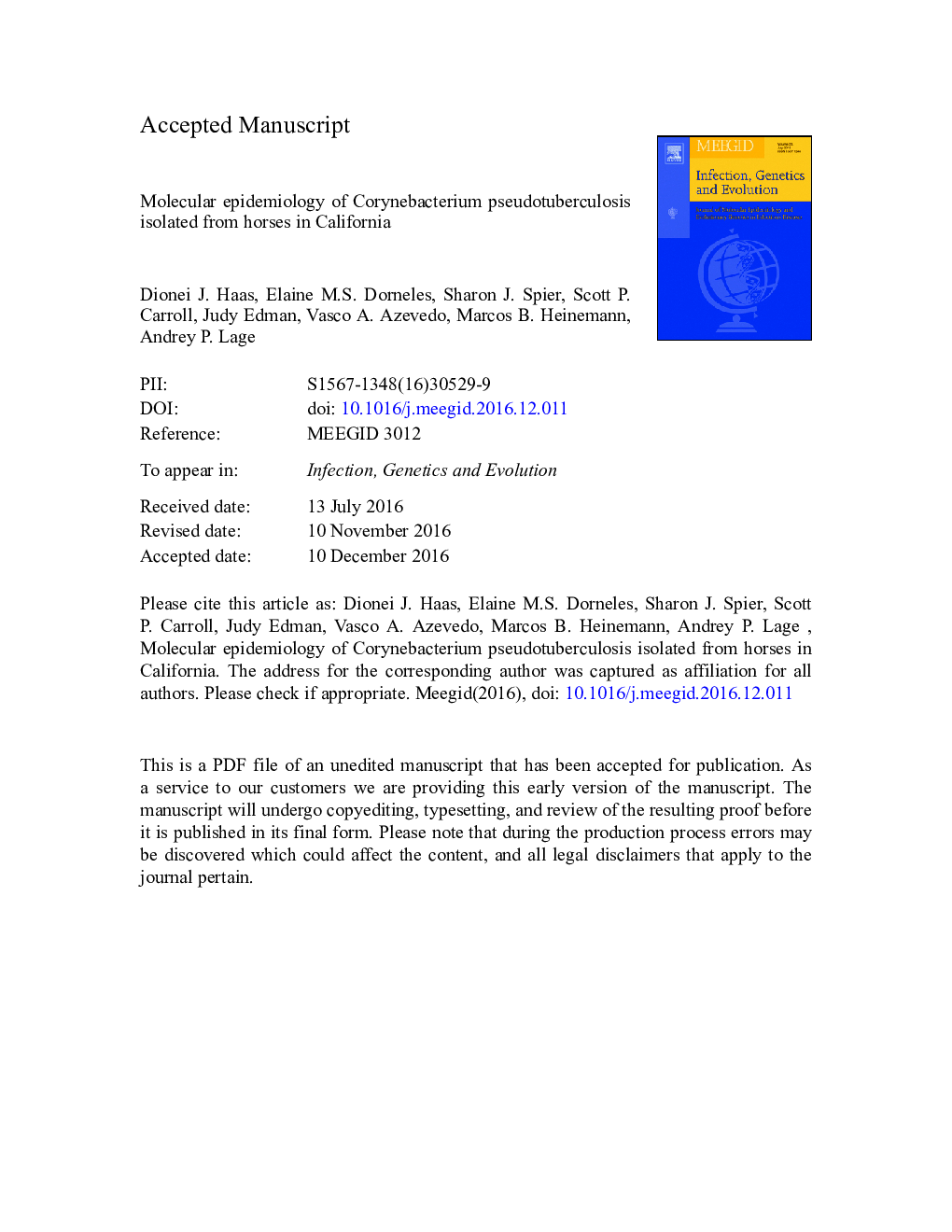| کد مقاله | کد نشریه | سال انتشار | مقاله انگلیسی | نسخه تمام متن |
|---|---|---|---|---|
| 5590626 | 1570154 | 2017 | 39 صفحه PDF | دانلود رایگان |
عنوان انگلیسی مقاله ISI
Molecular epidemiology of Corynebacterium pseudotuberculosis isolated from horses in California
ترجمه فارسی عنوان
اپیدمیولوژی مولکولی کریوانباکتریوم سوسپانسیون جدا شده از اسب ها در کالیفرنیا
دانلود مقاله + سفارش ترجمه
دانلود مقاله ISI انگلیسی
رایگان برای ایرانیان
موضوعات مرتبط
علوم زیستی و بیوفناوری
علوم کشاورزی و بیولوژیک
بوم شناسی، تکامل، رفتار و سامانه شناسی
چکیده انگلیسی
Corynebacterium pseudotuberculosis biovar Equi is an important pathogen of horses. It is increasing in frequency in the United States, and is responsible for various clinical forms of infection, including external abscesses, internal abscesses of the abdominal or thoracic cavities, and ulcerative lymphangitis. The host/pathogen factors dictating the form or severity of infection are currently unknown. Our recent investigations have shown that genotyping C. pseudotuberculosis isolates using enterobacterial repetitive intergenic consensus (ERIC)-PCR is useful for understanding the evolutionary genetics of the species as well for molecular epidemiology studies. The aims of the present study were to assess (i) the genetic diversity of C. pseudotuberculosis strains isolated from horses in California, United States and (ii) the epidemiologic relationships among isolates. One hundred and seven C. pseudotuberculosis biovar Equi isolates from ninety-five horses, and two C. pseudotuberculosis biovar Ovis strains, C. pseudotuberculosis ATCC 19410T type strain and C. pseudotuberculosis 1002 vaccine strain, were fingerprinted using the ERIC 1Â +Â 2-PCR. C. pseudotuberculosis isolated from horses showed a high genetic diversity, clustering in twenty-seven genotypes with a diversity index of 0.91. Minimal spanning tree showed four major clonal complexes with a pattern of temporal clustering. Strains isolated from the same horse showed identical ERIC 1Â +Â 2-PCR genotype, with the exception of two strains isolated from the same animal that showed distinct genotypes, suggesting a co-infection. We found no strong genetic signals related to clinical form (including internal versus external infections). However, temporal clustering of genotypes was observed.
ناشر
Database: Elsevier - ScienceDirect (ساینس دایرکت)
Journal: Infection, Genetics and Evolution - Volume 49, April 2017, Pages 186-194
Journal: Infection, Genetics and Evolution - Volume 49, April 2017, Pages 186-194
نویسندگان
Dionei J. Haas, Elaine M.S. Dorneles, Sharon J. Spier, Scott P. Carroll, Judy Edman, Vasco A. Azevedo, Marcos B. Heinemann, Andrey P. Lage,
